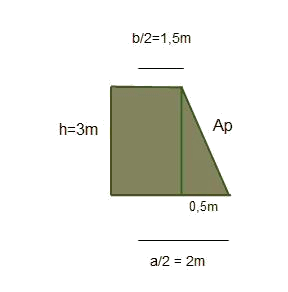It is the resultant polyhedron after having made a parallel cut to the basis of a pyramid. The mentioned cut will be named a minor base.
-
Lateral faces will have now the shape of isosceles trapeze.
- The height will be the distance between basis.
The following figure is an example of a frustum of pyramid with pentagonal bases.
Example
Calculate the area of a frustum of pyramid of basis squared with:

Now that we already have the apothem, we calcule the area of the side,
To calculate the volume of the pyramidal frustum we will use the following expression (
In the previous example the mentioned volume has a value of

